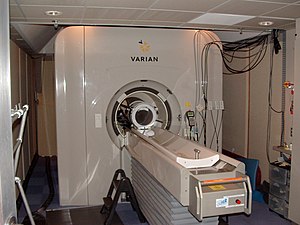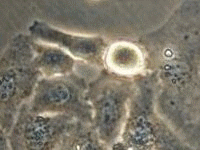Company Name : Praxis

Image via Wikipedia
Location:
MUMBAI , Maharashtra
Job Profile:
Trouble-shooting, repair & maintenance of Medical Equipments in the Hospital and maintaining purchase, Insurance, AMC and all other activities of leading biomedical team.Co-ordination in Installation of CT scan, MRI, PET CT, CR, Cathlab, Theater Light and X-ray, Ultrasound scan & Echo cardiogram and other hospital equipments
Functional Area : Bio Tech, R&D, Scientist
This is a preview of Job Oppurtunity For Biomedical Engineer In Mumbai.
Read the full post (110 words, 2 images, estimated 26 secs reading time)

Cancer cells photographed by camera attached to microscope in time-lapse manner. Image via Wikipedia
The upside of chemotherapy is that it attacks cancer cells and kills them. The downside – and a steep downside it is – is that it is composed of highly toxic compounds that attack other cells of the body, too, resulting in any number of harmful side effects, from anemia to hair loss to nausea and vomiting.
The question concerning researchers is how do we deliver chemotherapy drugs to the harmful cells and leave the healthy cells alone?
This is a preview of Innovation in Targeted Drug Delivery Using Gold Coatings.
Read the full post (509 words, 1 image, estimated 2:02 mins reading time)
An Introduction to Biomaterials
Buddy D. Ratner
University of Washington Engineered Biomaterials
Biomaterials are materials (synthetic and natural; solid and sometimes liquid) that are used in medical devices or in contact with biological systems. Biomaterials as a field has seen steady growth over its approximately half century of existence and uses ideas from medicine, biology, chemistry, materials science and engineering. There is also a powerful human side to biomaterials that considers ethics, law and the health care delivery system. This brief introduction overviews some key characteristics of the field of biomaterials and outlines issues and major subdivisons.
This is a preview of INTRODUCTION TO BIOMATERIALS FOR BIOMEDICAL ENGINEERS.
Read the full post (3286 words, 3 images, estimated 13:09 mins reading time)
Researchers from the University of Alabama at Birmingham’s School of Engineering have created a three-dimensional electrospun scaffold on the nano scale that more effectively and efficiently facilitates cell and tissue growth in the laboratory.
Nanoscaffolds support the adhesion, growth and function of various cell types as they mature into specific tissues such as tendons, muscles and bones during tissue engineering. Yet, the traditional industry method for electrospinning creates densely packed sheet-like structures that prevent cells from penetrating the nanoscaffolds.
This is a preview of 3D Nano-Scaffold for Tissue Engineering @ University of Alabama.
Read the full post (375 words, 2 images, estimated 1:30 mins reading time)





